Books: The Worst Hard Time
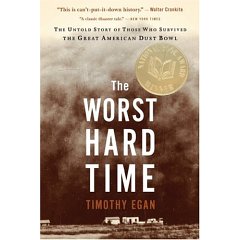
Pick up a copy of The Worst Hard Time and you can’t put it down, especially if you work on water issues. Author Timothy Egan foreshadows disaster on the Great Plains with detail and perception. And when it strikes, he recreates the visceral experience of relentless dust storms caused by drought and short-sighted farming practices. This book is a haunting window to a future that may be unfolding in other parts of the world, and one that could return to the United States.
From Publishers WeeklyStarred Review. Egan tells an extraordinary tale in this visceral account of how America’s great, grassy plains turned to dust, and how the ferocious plains winds stirred up an endless series of “black blizzards” that were like a biblical plague: “Dust clouds boiled up, ten thousand feet or more in the sky, and rolled like moving mountains” in what became known as the Dust Bowl. But the plague was man-made, as Egan shows: the plains weren’t suited to farming, and plowing up the grass to plant wheat, along with a confluence of economic disaster—the Depression—and natural disaster—eight years of drought—resulted in an ecological and human catastrophe that Egan details with stunning specificity. He grounds his tale in portraits of the people who settled the plains: hardy Americans and immigrants desperate for a piece of land to call their own and lured by the lies of promoters who said the ground was arable. Egan’s interviews with survivors produce tales of courage and suffering: Hazel Lucas, for instance, dared to give birth in the midst of the blight only to see her baby die of “dust pneumonia” when her lungs clogged with the airborne dirt. With characters who seem to have sprung from a novel by Sinclair Lewis or Steinbeck, and Egan’s powerful writing, this account will long remain in readers’ minds. (Dec. 14)Copyright © Reed Business Information, a division of Reed Elsevier Inc. All rights reserved.From The New YorkerOn April 14, 1935, the biggest dust storm on record descended over five states, from the Dakotas to Amarillo, Texas. People standing a few feet apart could not see each other; if they touched, they risked being knocked over by the static electricity that the dust created in the air. The Dust Bowl was the product of reckless, market-driven farming that had so abused the land that, when dry weather came, the wind lifted up millions of acres of topsoil and whipped it around in “black blizzards,” which blew as far east as New York. This ecological disaster rapidly disfigured whole communities. Egan’s portraits of the families who stayed behind are sobering and far less familiar than those of the “exodusters” who staggered out of the High Plains. He tells of towns depopulated to this day, a mother who watched her baby die of “dust pneumonia,” and farmers who gathered tumbleweed as food for their cattle and, eventually, for their children.Copyright © 2006 The New Yorker
Circle of Blue provides relevant, reliable, and actionable on-the-ground information about the world’s resource crises.

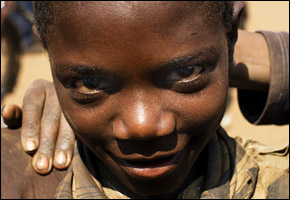
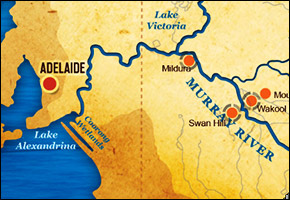

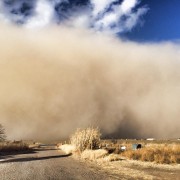
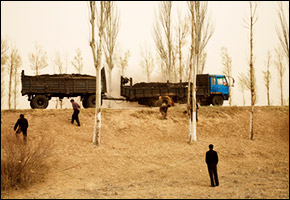

Leave a Reply
Want to join the discussion?Feel free to contribute!